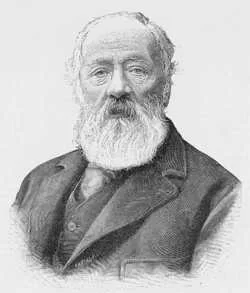A patent is a voluntary disclosure of new, novel and useful technical information to the world. In essence, patents inform the world of something it has never seen before that can be used to solve a technical problem. For a patent to issue, the information disclosed must be sufficient to enable a person familiar with the technological field to make the invention without undue additional experimentation. The purpose of the patent system is to encourage the disclosure of new, innovative technology so the base of knowledge upon which other inventors work advances. Technology advances faster and the world benefits from those advances when new technology is disclosed and built upon instead of hidden from other innovators in the field who, if they knew about the new technology, could further advance it. Unfortunately, big industry giants have used their power to destroy the presumption of validity, remove impartial judges from the decision-making process via the AIA, and appoint executioners to help kill or steal competing patents in order to maintain their monopolies.
In exchange for the technical disclosures in patents to competitors and potential competitors, the patentee has to be protected from free-riders and thieves who contributed nothing to the disclosed technical advancement, but would copy it for their own profit. So for disclosing her invention for others to advance going forward, the original inventor/patentee is granted a patent. The patent is an exclusive right to make money off her invention for a limited period of time. A patent is essentially a right to exclude others from using your invention without compensating you. A license from the patent owner to a company that wants to use the patented technology is a compensated, or bargained waiver of that right to exclude.
A strong patent system means an inventor can rely upon the strength of his patent to actually receive the benefit of the public disclosure of his invention. This reliance on a strong patent system is called the “presumption of validity”. In order to attract investments, justify research and development efforts and develop new markets for new products, a patentee must be confident that its duly-issued (and paid for) United States patent will be enforced by the issuing government and therefore respected by competitors, both existing and potential. In other words, if the patent system is viewed as weak as to enforcement of patent rights, inventors receive nothing for disclosing their inventions. The free riders, copiers and thieves can simply take the free information without compensation to the inventor. If inventors see the patent system as weak, they will not disclose their inventions, but hide them as trade secrets. This stifles innovation because new inventions that if disclosed could be improved upon are left unavailable. Most inventions today are improvements on prior, disclosed inventions, so a weak patent systems that discourages patenting slows the advances of technology and the benefits those advances would have brought are delayed or not realized at all. Patents matter.
The beneficiaries of a weak patent system are large multinationals who already dominate their markets with financial power and market share like Google, Facebook, Apple and Amazon. The Elites do not need patents. As they gain dominance in their markets, innovation is not as important as market share, profits and maintaining their dominance. The “peasants” (read: small companies and inventors who must innovate to compete) need strong patents to compete with, and perhaps one day join the Elites. Patents enable the American Dream.
Google is in essence a software company built upon a set of algorithms to enable the efficient search of internet content. Google did not invent the internet (nor did Al Gore). The internet was invented by the United States government and research institutions supported by your tax dollars.[10] Google just found a really profitable way to enable the public to efficiently use the internet.
As a business, Google is very susceptible to competition. If a group of programmers in their garage could come up with a new set of algorithms that searched more accurately, faster or even in a way that uses less energy, Google could be replaced, or at least have its market dominance threatened. But such a threat only exists if the new market participant is protected by patents. Without patent protection, Google can simply copy the new methods or use its hundreds of billions in offshore cash to buy the new market entrant for less than its full value. Google understood its precarious position as to new and emerging technologies, so it did what any Banana Republic Elite would do–it set out to destroy what it perceived as the real threat: the United States patent system.
Google was one of the three largest bundlers of campaign contributions to President Obama. The year after the America Invents Act (“AIA”) was passed, Google employees and their spouses’ direct contributions to Congressmen were almost $1 million, spread evenly between Republicans and Democrats. Google spent $18 million on lobbyists the year the AIA was passed. Google’s support of “think tanks” and lobbying organizations was even greater, and was done in cooperation with other Silicon Valley tech giants.
What did Google get for its money? A new, weaker patent system that allows challenges to patents outside of court, without a jury, without any presumption of validity and using a low standard of proof. In essence, Google (a CIA In-Q-Tel funded startup) and its Elite friends killed any presumption of validity, the presumption that makes patents valuable by protecting the expectations of patent owners that their rights would be enforceable in neutral, impartial courts against infringers. The patent owners who paid for the research and development of their inventions, paid attorneys to prosecute the patents according to the rules at the time, paid filing fees to the PTO, paid issuance fees to the PTO, paid maintenance fees to the PTO, then created markets for their patented products with investments in factories, distribution systems, marketing–all based on the presumption that these investments would be protected from copiers, free riders and thieves by a strong U.S. patent enforcement system now possessed patents that were not presumed to be valid under the new AIA procedures, a fact that has caused immense economic damage to inventors and small companies that depended on their patents for protection from infringing Elites. The Elites paid their way to the destruction of the very things that made U.S. patents valuable–their presumption of validity and impartial courts to enforce them against infringers.
Google wanted a weak patent system because it already dominated the search and internet advertising market in 2012, the year the AIA went into effect, with a 67% market share. Today with a weaker patent system firmly in place and no fear of any innovating competition protected by patents, Google’s market share has increased to almost 80%.
Killing the U.S. Patent System Required the Hiring of Executioners, in This Case, Administrative Patent Judges (APJs)
Now that Big Industry (Big Tech, Big Pharma, Big Ag, etc.) and the Elites had destroyed the presumption of validity and removed impartial judges from the decision-making process via the AIA, they needed a set of executioners. To finish the job of killing the U.S patent system, the administrative judges appointed to hear the cases had to be insulated from meaningful legal review and understand that their job was to kill patents. Enter head banana, Michele Lee, the political appointee who headed the PTO’s implementation of the AIA under bundler recipient President Obama.
Lee is a former Google patent attorney who was in charge of patent strategy for Google. After passage of the AIA and $36 million in lobbying by Google the prior two years, Ms. Lee was magically promoted to Director of the PTO from her position as head of the PTO’s Silicon Valley regional office. The fox was not only put in charge of the henhouse, it was a fox paid for by the wolves.
The Executioners Ms. Lee chose were a new AIA creation, Administrative Patent Judges, or APJs. They are not judges in the sense that term is understood by Americans. They are not independent:
- APJs work for the PTO Director, a political appointee.
- The PTO Director can hire and fire APJs who make decisions they do not like. There is no tenured independence for APJs.
- The PTO Director decides what to pay APJs and can change their pay for any reason.
- If an APJ panel asserts its independence and reaches a decision the PTO Director does not like, the Director may convene an expanded panel to re-decide a case until the PTO Director and his/her political boss is satisfied with a panel’s decision.
- The PTO Director may assign the APJs for each panel, so the decision on who hears the case is a political decision.
- APJs are not bound by the Code of Conduct for United States Judges or any other ethics code.
- APJs can decide cases involving former clients.
- APJs are allowed to decide cases then go to work for the same companies that sought to invalidate patents.
- APJs are exempt from job performance reviews.
Judges that are chosen by politicians who decide cases brought by political donors to the politicians are not really judges at all. They are banana workers who pick the bananas the donors want picked.
And even if the APJs were independent, which they are not, the procedures designed by Michele Lee governing the APJs conduct were set up to kill patents. Neither the AIA nor PTO rules limit the number of times a patent can be subjected to inter partes review. Let that sink in. The Elites can keep attacking a patent they do not like, directly or through surrogates, until they find a panel that will kill it. No matter how many times a patent owner wins at the PTAB, its patents are never safe.
Since the creation of IPRs, patents have been routinely reviewed on multiple occasions, some patent families having more than 125 separate petitions filed. Because a decision of one PTAB panel does not bind another one, surviving one review provides no armor against subsequent challenges. Thus, a PTO Director (or for that matter a President of the United States) intent on invalidating a particular patent for a major donor or supporter can continue ordering more and more inter partes reviews until the desired outcome is achieved. Pass the bananas.
The Effect of PTAB Invalidating Patents Via IPRs
On September 26, 2016, the U.S. Commerce Department released a comprehensive report, “Intellectual Property and the U.S. Economy: 2016 Update,” which found that IP-intensive industries support at least 45 million U.S. jobs and contribute more than $6 trillion dollars to, or 38.2 percent of, U.S. gross domestic product. The report, a joint product of the Commerce Department’s United States Patent and Trademark Office and Economics and Statistics Administration serves as an update to the Intellectual Property and the U.S. Economy: Industries in Focus report released March 2012. A crisis is developing in this sector of the U.S. economy, however, as new AIA procedures allowing attacks on the validity of U.S. patents have made these valuable assets far less valuable and therefore incapable of supporting the same level of investment in new industries and technologies. Jobs are being lost, millions of high paying, high tech jobs. Some economists are estimating the decline in the value of U.S. patents to be in the trillions of dollars. That is a lot of bananas.
Why the drop in value? Remember, patents are only valuable if they can be enforced, so any “reform” efforts that make enforcing a patent more expensive and less certain as to outcome harms the patent owner and undermines the ability of the U.S. economy to protect inventors’ rights. The proof is in the cost of bananas. The average price per patent over the three-year period 2012 to 2014 dropped 61% from $422,286 per patent to $164,232. In that timeframe, the number of patents sold by inventors dropped from just under 7000 to 2800, showing a decrease in liquidity in the patent market. The overall sales dropped from $3 billion to well under one-half billion in patent sales per year, or by 84%. The trend accelerated after 2014. If an inventor cannot sell his or her invention for a price that supports their time and effort, they will stop inventing. When they stop inventing, innovation stops.
Why did this precipitous drop in the value of United States patents occur? IPRs.
Federal District Court with the traditional protections to patent owners invalidates 28.76% of patents as of 2015. The PTAB invalidates 76.61% in IPRs, and because there is no limit on the number of IPRs that can be filed against a patent, the infringers and free riders can keep filing IPRs until they win. The effective kill rate is likely close to 90%, and in some industries even higher.[25] If the IPRs were really intended to stop bad patents from being enforced at great cost, then the results in IPRs and district courts should be the same, or very similar. But the kill rate for patents in IPRs is almost three times higher. Unless you believe that the US Patent Office is wrong on its efforts to issue patents 2 of 3 times it acts, there is something else going on in IPRs. The IPR statistics prove that the system was not designed to get to the same results faster and cheaper, but to get to a different result – the destruction of the United States patent system.
Since passage of the AIA, the United States has fallen from 1st to 12th in the ranking of the strength of its intellectual property system, now tied with Italy and behind all other highly developed economies.[26] As the U.S. weakens its patent system, other countries are strengthening theirs. China in particular is beefing up its patent infringement remedies like injunctions and allowing ever higher damages awards.[27] So the center of the intellectual property universe will move to China. That can only be bad for U.S. inventors and companies. China designs its IP policies to protect Chinese entities.
The United States Congress has effectively redesigned our intellectual property policies to protect political contributors, many of which are multinational corporations that have no loyalty to the United States because a majority of their revenue is sourced (and kept beyond the reach of US taxes) overseas. Anti-patent, market dominating multinational Elites like Google are loyal to profits and their ability to dominate markets.
A Banana Republic only continues to exist as long as it can supply the bananas. Today, the Elites need the U.S. less and less. They keep trillions of dollars overseas to avoid taxes, they build their products in Asia and their largest markets are quickly becoming Asian as well. We are selling our democracy to the highest bidder while those same bidders are planting all their new banana trees elsewhere. Go ask the people of Honduras what United Fruit and Dole are doing for them now.
Proponents of intellectual property rights often rely on one of two lines of reasoning.
The first is based on the misunderstanding that the frequency or volume of innovations determine economic growth. The second is captured by the question, “So if I spend $1 billion on R&D (research and development) to bring a new drug to market, anyone should be able to copy my drug without compensation?” Both are based on the same fundamental error: assuming that innovation is a matter of production. It is not. Innovation is all about entrepreneurship, and that’s why intellectual property rights do not and cannot help.
The economic growth argument appears to be in line with empirical observation. After all, it is the introduction of and change caused by valuable innovations that make us better off and raise our standard of living. But as is so often the case, observations in economics tend to lead to problematic if not false conclusions. The market is a trial-and-error process under uncertainty, in which entrepreneurs and businesses compete by offering goods and services anticipated to satisfy consumers at a future point in time better than the offerings of others. Then, obviously, innovations are important.
But it is not the number of innovations attempted that matters. There is also scarcity, meaning that a market process that generates a huge number of innovations may in effect produce less value than a process that generates only a few. Quality is more important than quantity, just like aiming the one arrow will produce a better result than shooting a great number of arrows in random directions. Although entrepreneurs hardly have a visible target to aim for, their “division of intellectual labor” places boundaries on what attempts are made. Innovations are uncertain, but not undirected or random.
The compensation argument makes the same mistake but clarifies the error. The issue in the market is not about compensation for investment or effort made, but the creation of value for consumers. We are not, and should not be, compensated for the time and effort we put into something, but for our contribution to value. The reason we get paid at our jobs is not that we get up in the morning and spend our days doing tedious tasks and following management’s orders, but because the entrepreneurs, along with their “junior partners” (management), are betting that this type of production will be valuable to consumers and thus generate revenue that more than covers cost.
In other words, that a firm invests in research and development is not primarily a matter of production, but one of attempting to find solutions that consumers will value. It is a means toward generating sales with revenue that exceeds cost. Such revenue is generated, because this effort turns out to be more valuable to consumers relative to other entrepreneurial undertakings. As Mises puts it, “The only source from which an entrepreneur’s profits stem is his ability to anticipate better than other people the future demand of the consumers” (emphasis added).
The entrepreneurial problem, therefore, is one about better figuring out how to serve consumers. Innovation is undoubtedly a means toward that end, but whether an innovation is profitable depends not on the innovation being new or even costing a lot of money to carry out, but on whether it is correctly positioned with respect to (1) consumers’ (future) wants and (2) other entrepreneurs’ (future) offerings. Both aspects are necessary for the market process to progress and thereby improve our standard of living.
Intellectual property rights, imposed on entrepreneurs generally and thus on the market, mean that entrepreneurs are relieved of the second part of the problem—the positioning relative to other entrepreneurs. This is the purpose of this type of regulation, but what it means is that entrepreneurs can and will overinvest in innovations that comply with the regulations’ requirements for protection. And they will do so instead of innovating for the benefit of consumers relative other entrepreneurs’ offerings.
The result is that innovations are pursued for the sake of being innovations, and not for their contribution to consumers’ want satisfaction. In other words, investments in research and development are not directed by the consumer’s wants. Consequently, what matters is the investment in R&D rather than the business model—how, when, and in what manner the offering is presented to the consumer.
This is more than an inefficiency in the market system. It is a change of incentives that fundamentally distorts the market process, its direction, and thus the economy’s ability to satisfy actual consumer wants.
The real solution lies in allowing entrepreneurs to be entrepreneurs, and thus, through their imaginative speculative efforts, to figure out how to beat each other in offering goods with value to consumers and be the “driving force” of the economy. Freeing innovation efforts from their entrepreneurial component is not the way to improve the value for consumers or improve the functioning of the market process. It is only a matter of providing some producers with profit at the expense of everyone, as well as the economy and society.
Sources:
- Mises.org
- http://www.ipwatchdog.com/2018/03/21/how-google-and-big-tech-killed-the-u-s-patent-system/id=95080/
Chronological History of Events Involving Patents
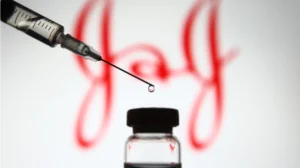
CDC Warns Americans NOT to Get (non-NIAID patented) J&J Shot Over Blood Clot Risk
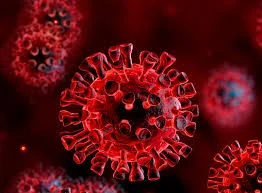
Moderna files Patent for “Modified Polynucleotides for the Production of Secreted Proteins” which contains “Luciferase”
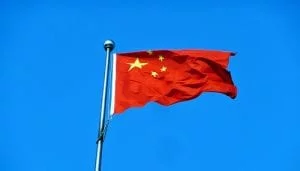
Report: US Failing to Stop China from Stealing Research
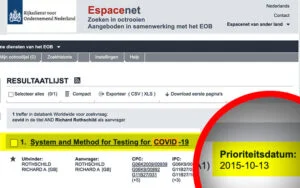
A ‘System and Method for Testing for COVID-19’ was patented by Richard Rothschild
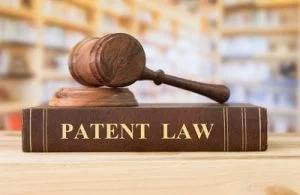
The Leahy–Smith America Invents Act (AIA) was passed by Congress and Signed into law by President Barack Obama

Leader Technologies sues Facebook for Patent Infringement. How the Deep State Conspired to Steal their Social Networking Invention as a Tool for Rogue CIA Mind Control
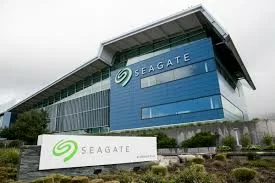
Court of Appeals Issued Decision ‘In re Seagate Technology’ making it Virtually Impossible for Inventors to Demonstrate Willful Infringement
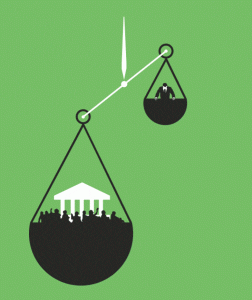
The United States Supreme Court ruling in KSR v. Teleflex fundamentally changes Patent Law Making it Harder to Protect Patents
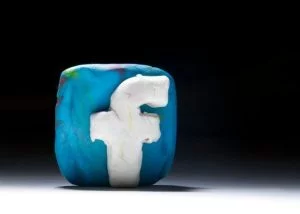
Facebook Launches with CIA Front-man Mark Zuckerburg
